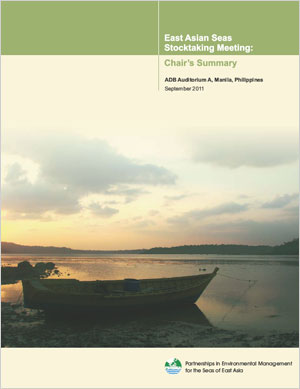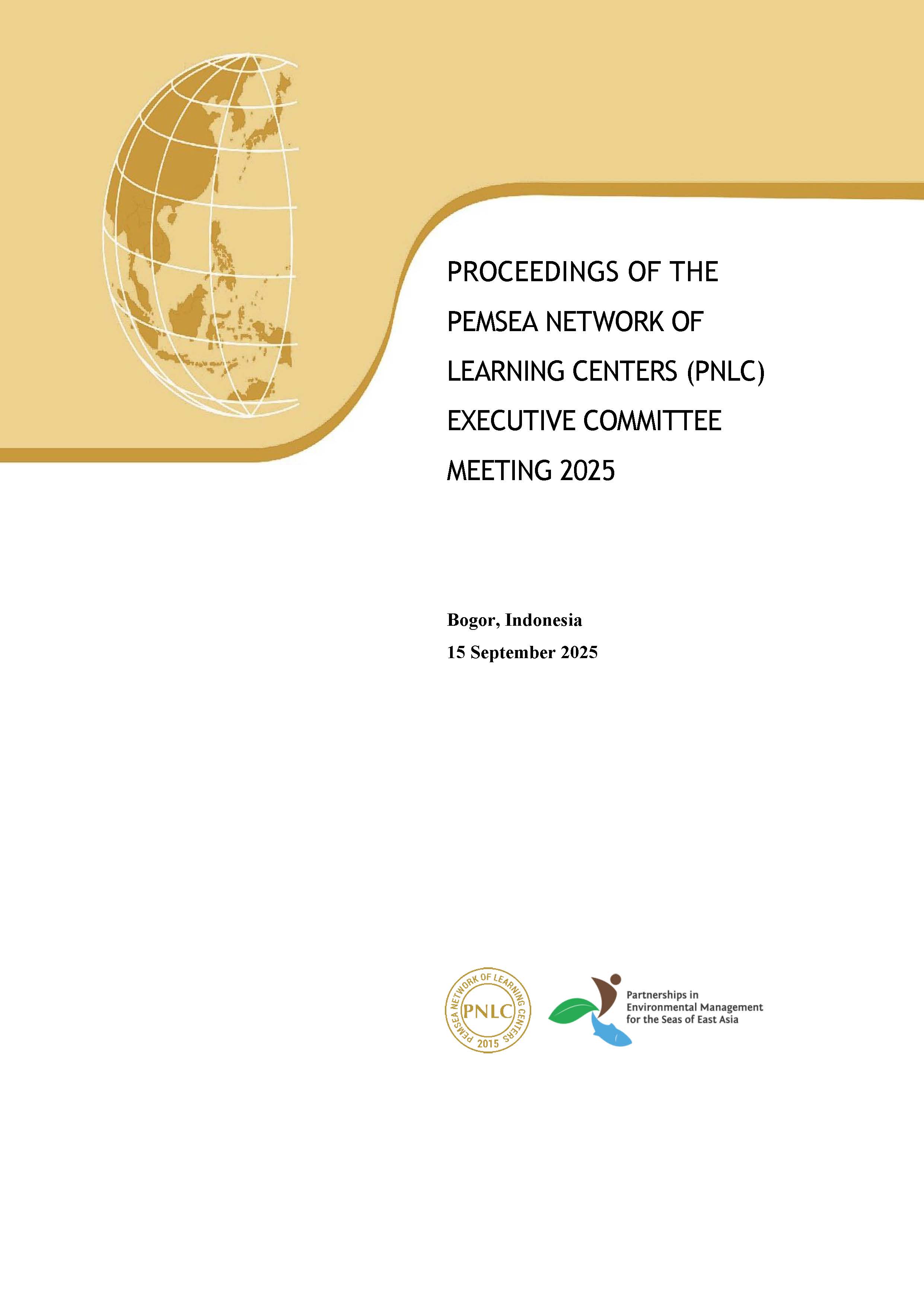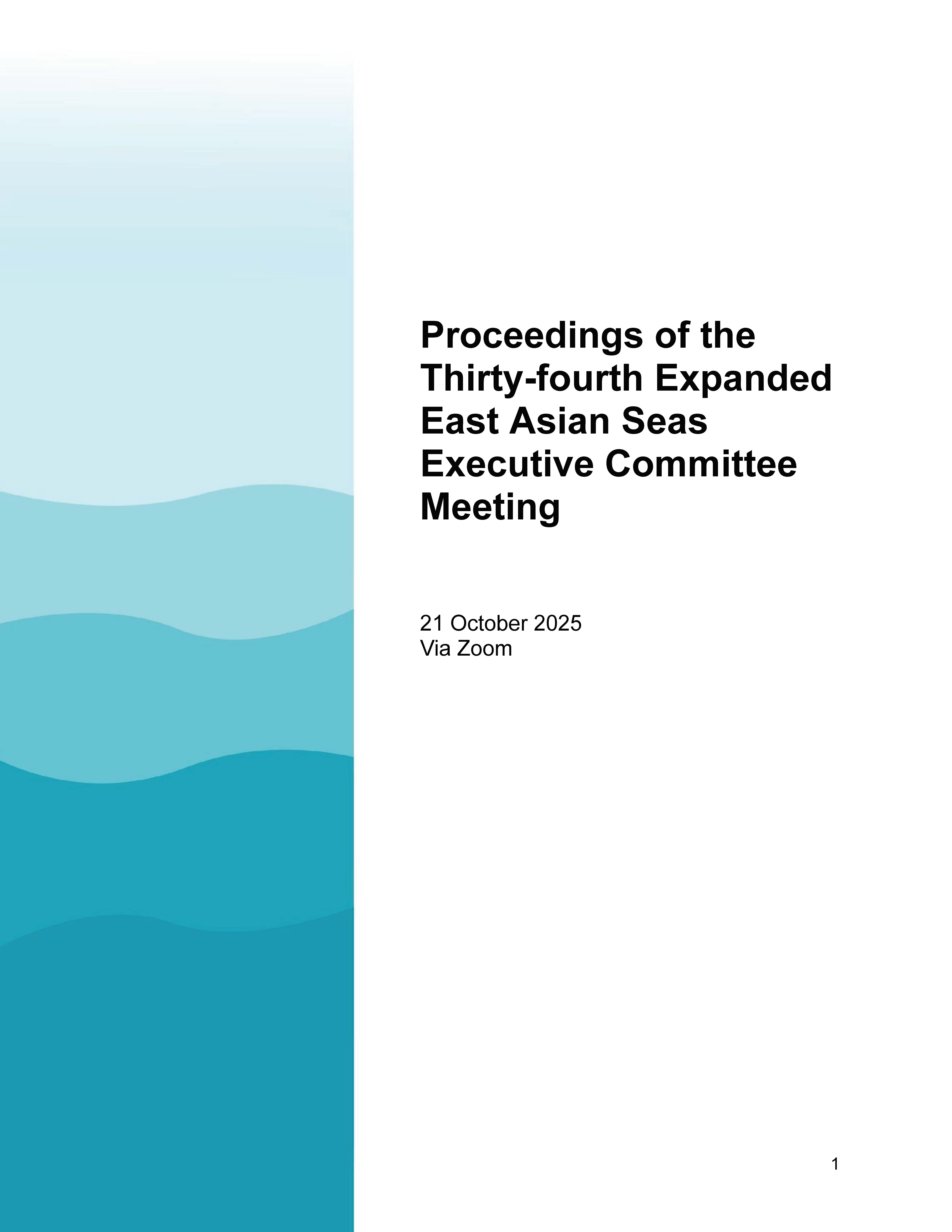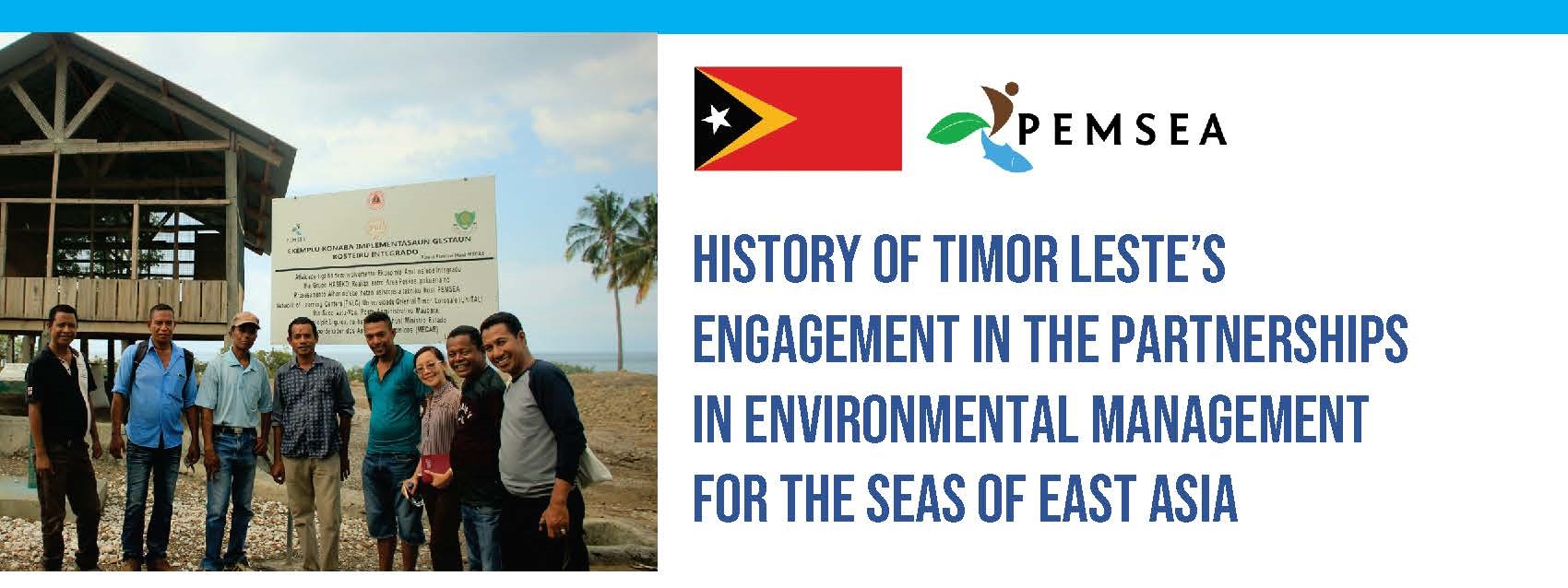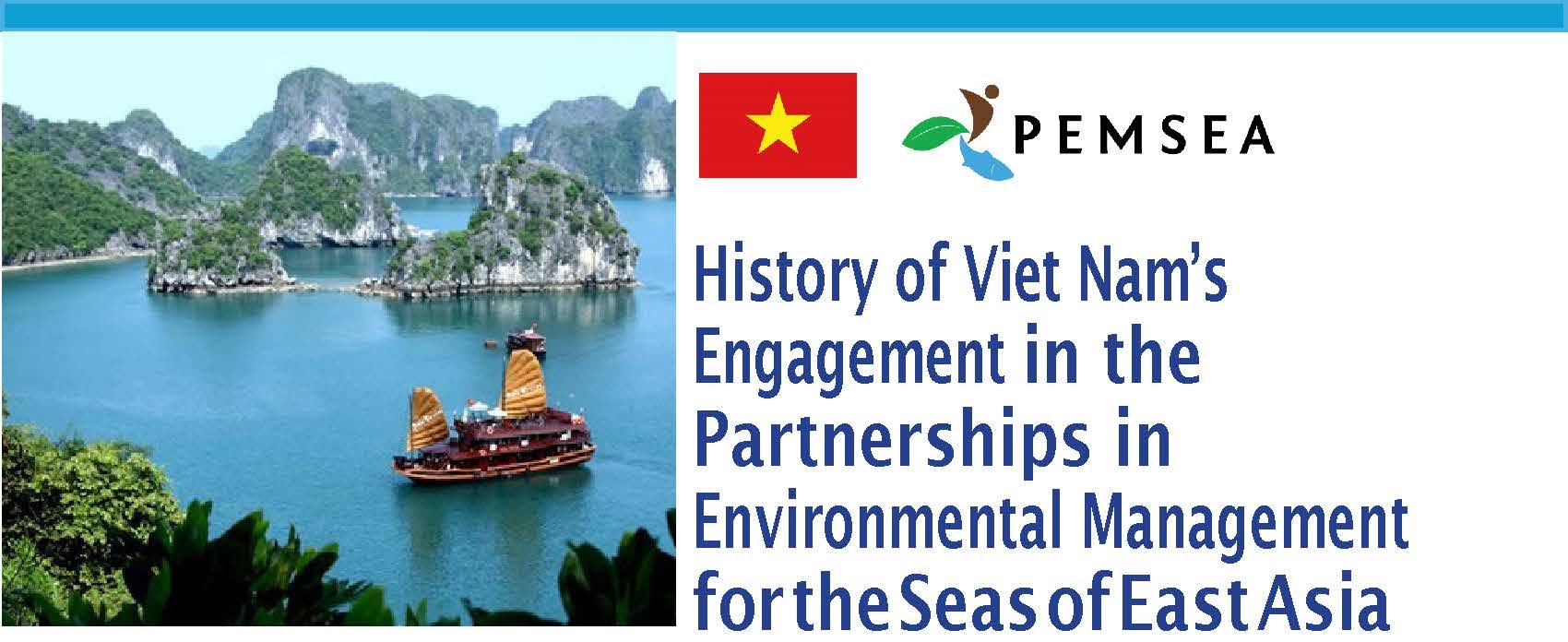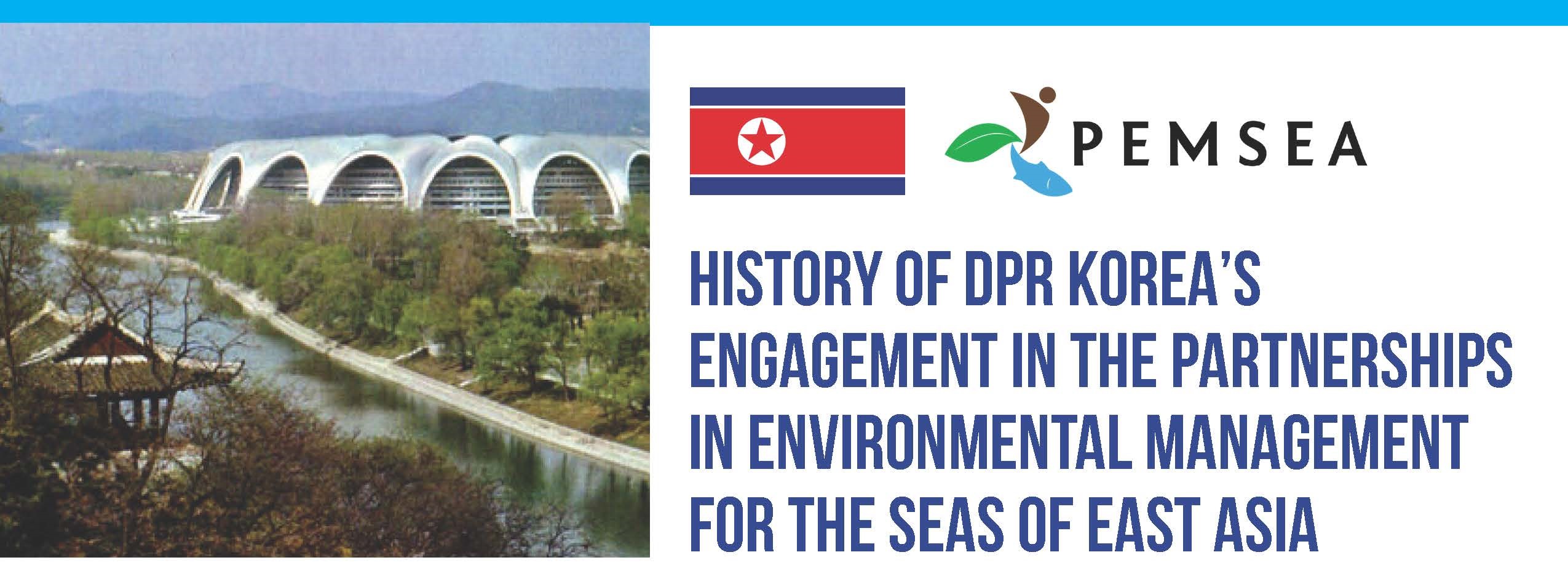
Breadcrumb
East Asian Seas Stocktaking Meeting: Chair's Summary
PUBLICATION DATE:
Thursday, September 01, 2011
PUBLICATION TYPE:
Meeting Documents
STATUS:
Only Available Online
DESCRIPTION:
The East Asian Seas Stocktaking Meeting was held at the Asian Development Bank (ADB) Auditorium A, Manila, Philippines from 28-29 October 2010. The ADB and Government of the Philippines through the Department of Environment and Natural Resources hosted the meeting. The objective of the meeting was to assess the status and identify the constraints to sustainable management of the regional seas, and to prioritize the interventions and the potential role of the GEF over the next 4 years (i.e., 2011 to 2014). The Stocktaking Meeting concluded the following: The Stocktaking Background Paper was well received and considered to be a good and useful document in the context of the stocktaking effort. It will undergo refinement based on inputs provided during the meeting. The refined paper will then be disseminated to GEF agencies, GEF Secretariat, participating countries and concerned regional organizations. Country ownership and country-drivenness to address transboundary issues in the Seas of East Asia have developed and strengthened over the years with GEF support, as evidenced by the development and adoption of the SDS-SEA and the YSLME and SCSLME SAPs with their associated national action plans as well as by the implementation of the pollution reduction investment fund. PEMSEA and the SDS-SEA, respectively, can provide a regional governance mechanism, framework and scope for integrated and collaborative planning, coordination, and monitoring and reporting of outputs and impacts of regional, subregional and national projects for sustainable management of the seas of East Asia, as well as to promote knowledge management and associated good practices. There are recognized needs for increased programmatic GEF investments in the EAS region according to a programmatic agenda covering: Knowledge-sharing, advocacy, communication, development and dissemination and good practices, and capacity development/training, awareness building and education; Thematic priorities including: the blue agenda with marine and coastal habitat and resource conservation and management (with an increase attention to fisheries resources); and the brown agenda: land-based sources of marine pollution. In addition, climate change adaptation is a cross-cutting priority to be mainstreamed in the two above thematic priorities. Scaling up of investments at the local and national levels in support of capital works identified and developed in coastal areas in the context of ICM, when possible, through linkages with the public and private sectors, using domestic and international finance; A shift from projects that have a planning focus to projects that promote good practices, implement agreed plans and result in desired on-the-ground changes. A programmatic agenda to scale up entails: Working across sectors and in several countries; Mobilizing resources programmatically within and across different sources of finance and different sectors; and Making effective and efficient use of available human and financial resources by increasing synergy and alignment. GEF agencies now need to work with countries to develop the regional and national projects using a programmatic approach for submission to GEF in order to support the regional implementation of SDS-SEA (final phase), the YSLME SAP and the SCSLME SAP as well as to scale up country-based actions along the lines of the identified thematic priorities.
RELATED PUBLICATIONS
PEMSEA NETWORK OF LEARNING CENTERS (PNLC) 2025 Executive Committee Meeting Proceedings
The 2025 PNLC Executive Committee (PNLC EC) Meeting was organized by PNLC Secretariat on 15 September 2025 in Bogor, Indonesia. It was participated by Prof. Yonvitner of the Center for Coastal and Marine Resources Studies of the IPB University (CCMRS-IPB) and President of the PNLC, Dr. Fang Qinhua, Deputy Director of the Coastal and Ocean Management Institute of Xiamen University (COMI-XU) and Vice-President of the PNLC, and Ms. Aimee T. Gonzales, PEMSEA Resource Facility (PRF) Executive Director as members of the PNLC Executive Committee. Ms. Isdahartatie PNLC secretariat Coordinator/ CCMRS-IPB University, Ms. Nancy Bermas from PRF, Francesca Cortez (PRF Secretariat Assistant) and Lusita Meilana, PNLC Secretariat staff. The meeting was chaired by Prof. Yonvitner. Ms. Isdahartati served as the Secretariat of the meeting.
The following supporting documents are annexed to these proceedings:
- Annex 1: Meeting Agenda / Program
- Annex 2: Links to the meeting documents, presentation and photos
- Annex 3: List of participants
Proceedings of the Thirty-fourth Expanded East Asian Seas Executive Committee Meeting
The Expanded East Asian Seas (EAS) Executive Committee convened its 34th Executive Committee Meeting on 21 October 2025 online via Zoom. The meeting was attended by EAS Partnership Council Chair Attorney Jonas Leones; Intergovernmental Session Chair Mr. Le Dai Thang; Intergovernmental Session Co-Chair Dr. Xinwei Yu; Technical Session Chair Dr. Suk-Jae Kwon; and Technical Session Co-Chair Dr. Wakita Kazumi. The PEMSEA Resource Facility (PRF), led by Executive Director (ED) Ms. Aimee T. Gonzales, served as Secretariat to the meeting. PEMSEA Country Partners in attendance included national focal points and representatives from Cambodia, China, Indonesia, Japan, Lao PDR, the Philippines, the Republic of Korea, Singapore, Timor-Leste, and Viet Nam. Non-Country Partners present included representatives from the ASEAN Centre for Biodiversity, Ipieca GISEA, Oil Spill Response Limited, National Marine Hazard Mitigation Service, International Center for Environmental Management of Enclosed Coastal Seas (EMECS), PEMSEA Network of Local Governments, and Korea Institute of Ocean Science & Technology, among others. Online observers included staff from the PEMSEA Resource Facility and UNDP.
History of Timor Leste's engagement in PEMSEA
Since joining PEMSEA in 2006 through the signing of the Haikou Partnership Agreement, Timor-Leste has made remarkable progress in advancing sustainable coastal and ocean governance under the Sustainable Development Strategy for the Seas of East Asia (SDS-SEA). Over the years, the country has implemented Integrated Coastal Management (ICM) programs in key municipalities, developed national ocean and coastal policies, and strengthened inter-agency collaboration for marine protection and livelihood enhancement. Through its participation in regional initiatives such as ATSEA and the Marine Plastics ODA Project, Timor-Leste continues to demonstrate strong commitment to ecosystem-based management, blue economy development, and regional cooperation for healthy and resilient seas.
History of Viet Nam's engagement in PEMSEA
Since 1993, Viet Nam has been an active partner in advancing sustainable coastal and ocean governance in the East Asian Seas through PEMSEA. From pioneering Integrated Coastal Management (ICM) in Da Nang to establishing the Viet Nam Administration of Seas and Islands (VASI), the country has institutionalized ICM in national policy and legislation while fostering regional cooperation through leadership roles in PEMSEA bodies and ministerial forums. Viet Nam’s consistent participation in key initiatives and adoption of major regional declarations underscore its strong commitment to blue economy development, marine ecosystem protection, and the long-term implementation of the Sustainable Development Strategy for the Seas of East Asia (SDS-SEA).
History of DPR Korea's Engagement in PEMSEA
Since joining the regional GEF/UNDP/IMO Marine Pollution Prevention in the East Asian Seas (MPP-EAS) project, the DPR Korea has actively advanced Integrated Coastal Management (ICM) through the establishment of the Nampho demonstration site and the National ICM Training Center at Kim Il Sung University. The country has consistently participated in key regional forums, including the East Asian Seas Congresses and Ministerial Forums, adopting major regional declarations and frameworks such as the SDS-SEA and Manila Declaration. Its engagement reflects a sustained commitment to regional cooperation, marine pollution prevention, and sustainable coastal development under PEMSEA.
